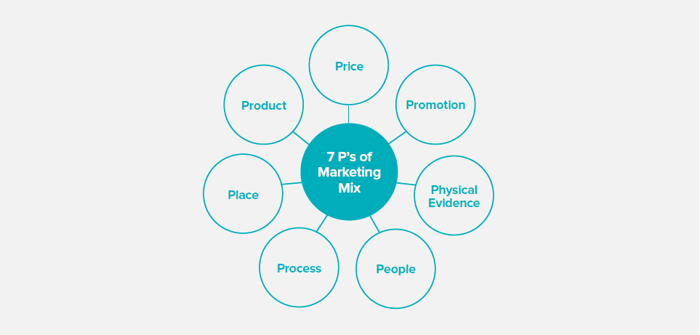Service businesses of any size often face similar challenges in their pursuit of growth. Whether scaling from a start-up or a mid-sized business, there are impediments to growth both inside and outside the organization.
There are two technological inhibitors inside the organization. The first is an overreliance on spreadsheets. The second is the presence of solutions that were either developed in-house or brought in to solve a specific problem or pain point, known as “point solutions”. Finance, operations, sales and HR teams all find that their existing systems deliver fewer benefits than they were originally promised, and business leaders become frustrated that they’re unable to view the business as a whole because of the lack of synergy between systems.
Outside the organization there are new challenges, including the availability of talent which is at its lowest point in years for many sectors. The importance of finding and retaining talent is more critical than ever.
For your organization to grow, you must first identify your strategic goals along with your risks and weaknesses. Staffing, technology and focus are the key to your success, so let’s address some important questions on those topics to help enable and sustain growth for your business.
What Is the Strategic Focus?
Strategic focus starts with vision. When fulfilling that vision, it’s better to focus on one or two things that will achieve the vision rather than diluting business efforts to attempt several objectives.
Technology can assist professional services businesses in cementing partnerships with other organizations that help achieve their vision. Through collaboration tools and shared resources, the ability to share information and seamlessly integrate processes between organizations will become increasingly useful as the complexity and depth of partnerships grow.
How Will the Organization Acquire New Business?
This isn’t just about the sales and marketing strategy to attract new business. It’s also how the company identifies white space in the existing customer base. Often that white space is identified by consultants on the front line, but how do they make account managers aware of such opportunities? Integrating and coordinating information feeds from the top of the marketing funnel through to insights drawn from consultants delivering projects can help to grow revenue.

Dibb and Simkin's (2012) “Seven P’s of Marketing”
In terms of sales and marketing for professional services, companies should consider a unified approach. Dibb and Simkin (2012)1 highlighted the extension of the classic four “P’s” of marketing (promotion, place, product and price), adding three new ones: process, physical evidence (ambience) and people for service-centric organizations.
The more integrated systems are, the more unified and effective marketing campaigns can become. A customer journey that starts with an email marketing campaign is subsequently tracked through the sales process using CRM. It becomes an opportunity to which more information is added. The information in the opportunity then becomes the fundamental information for delivery of the project.
Are You Striving for Operational Excellence?
Operational excellence varies for each business but there are some key metrics that organizations need to measure themselves against. Services Performance Insight (SPI) Research LLC identified six key financial metrics for improvement in financial maturity:
- Annual revenue per billable consultant
- Annual revenue per employee
- Billable utilization
- Project margin
- Project over-run
- Earnings before interest, taxes, depreciation and amortization (EBITDA)
SPI identified that small firms could demonstrate high key performance indicator (KPI) values. However, as organizations start to scale, the metrics start to drop. When the organization is small, it can run the few projects and resources it has on a single spreadsheet. As the business grows, this is no longer a viable strategy.
These aren’t the only important metrics for a service business. Pipeline value, pipeline conversion rates, staff retention and employee and customer satisfactions are also important. Understanding the correlations between these metrics is supported by having a single source of data to analyze.
It’s crucial for today’s service businesses to be able to measure metrics ranging from project, financial and human resources to sales and marketing. At a minimum, a growing service business needs to measure these KPIs accurately and in a timely fashion. Companies often focus on the past using reports, merely looking at historical data. The modern service business needs to prepare for the future, not just for financial planning but also for resource and talent planning.
How do organizations improve performance? Often through reassessing processes, better automation and even through the application of artificial intelligence (AI). Use AI to streamline approval processes by only flagging to managers through sampling or exceptions. AI can learn and adopt parameters automatically, identifying outliers and flagging them for approval. AI can also help by flagging where projects are progressing at a below average rate. Managers will no longer need to trawl through figures to identify the issues because most of them will be flagged before the signals become visible.
Do You Have the Right People and Supporting Technology?
It’s not just about having the right people — it’s also about having the right team. Having the right team helps to achieve organizational success, and it’s not always about being the most technically proficient. Skills need to be balanced with personality and attuned to culture, which starts from the top down.
Having the right people is also part of understanding the project pipeline and its resource requirements. What is in the sales pipeline? What projects are about to be signed off? What resources are required? The further ahead resourcing managers can see requirements, the more accurate their hiring decisions are. While companies can fill requirements using contractors, these are more expensive and cut profit levels.
The technology adopted needs to meet the requirements of both the existing and future workforce. Cloud-based, mobile-enabled technology allows users to access from any location at any time. Ideally, the technology should have supporting apps that work offline when necessary to record time and/or expenses.
Is the Organization Prepared for Growth and International Expansion?
Today, it’s easier than ever before for a business to expand internationally. The internet enables a business to export from its first day of operations. While professional services might once have concentrated on a single national market, now clients might demand that they deliver services not just in their home country, but abroad as well.
There are many challenges of internationalization. However, expansion through partnerships, acquisition or start-up requires processes and systems to help cope. Some challenges include cultural differences, language barriers and financial/legal compliance.
It’s not just about multi-currency. Service businesses that need to operate in different locations need more than multi-currency. Local tax and local accounting regulations need to be met. A modern, cloud-based ERP allows organizations to use a single system across all companies and territories. Consolidation is no longer achieved through spreadsheets and emails as finance professionals can see all financial data from countries and see the true cost of delivering multinational projects.
Cloud-based software also enables expansion both organically and through mergers and acquisitions (M&A). Deployment is rapid as new entities can be set up by the acquiring company, and implementation is often faster and less costly than attempting to integrate systems. Implementing uniform systems after acquisitions helps unify organizations into the same culture and processes.
Can Technology Solve Everything?
Technology may not fix all your problems, but it can certainly help. Business leaders need to continually ask tough questions like “Will our current systems and processes support our growth?” and “Will they scale both in size and complexity?”
An organization that has its processes defined by spreadsheets will reach a point where processes start to fail. It will need to implement a solution that can automate processes to enable further growth. Some companies will already have point solutions in place that may even be cloud-based applications. Even if they integrate, there is often still duplication of data entry, process and functionality. It can lead to a “frankencloud” of applications that is costly to maintain and is often poorly implemented.
Your business should not have siloed departments. Some companies are taking this to the extreme. The adoption of agile working methodologies, such as BizOps, means that departmental lines are broken down and experts in different departments come together to form a single team.
Companies like the Dutch banking group ING5 have adopted working methodologies pioneered by companies like Netflix, Google and Spotify that no longer have traditional departments. “Squads” of nine people work on projects and “tribes” of several squads work a group of projects that are connected. Traditional departments are replaced by “chapters”, which are loosely defined groups of experts working in many squads rather than together.
Traditional barriers are broken down and information, once privy to only HR teams, is now available to every relevant person, and systems need to support this shift. Even if the organization doesn’t move towards agile working, there’s value in sharing information about both external and internal people, products and services across an organization. It also enables a 360-degree view of the customer. In product-based industries, sharing of knowledge between maintenance engineers, sales, finance and production can help improve products, increase sales and boost profits.
Is the Right Technology Enough?
Software to support a service business can take on many names. The most common in use today is professional services automation (PSA) software. The PSA software of today is nothing like the ones first promoted more than three decades ago.
Best-in-class functionality doesn’t just include time and expense reporting and project management, it should also include project accounting, resource management, CRM and HR.
A PSA solution must be accompanied by changes in the processes within an organization. If the frontline never talks to sales teams, a new piece of software will not resolve that. Those changes must be driven by the business leadership and are just as significant as the technology implementation itself.
What Should Be the Next Generation of PSA?
It’s not enough to concentrate on the specific functionality of a PSA. That’s important, but each organization will have its own view on what to prioritize. What’s most significant is the underlying architecture and strategy of the business that’s delivering the PSA.
The product should be extensible, not just with additional modules but with specialist products. This is achievable through APIs or a native platform on which third party applications are built. A key indication of a PSA solution’s maturity is the size of its application ecosystem.
The product shouldn’t just be able to add third party products, it also needs a roadmap. The vendor should have awareness of the latest trends and invest in them. Some of these are more important than others, for example, the integration of human resource management (HRM) into a PSA. Blockchain is still early in the hype cycle but there are uses, such as smart contracts, that might be applicable to a PSA.
Are you stuck using spreadsheets or point solutions? Should you consider looking again at the software that is available? If you aren’t able to automate processes, measure KPIs or plan for the future within your current systems, it’s time to look ahead. A new generation of PSA software awaits.
Need Help?
Looking to enhance your project management? Contact us online, give us a call at 410.685.5512 or click the link below to schedule your demo.


